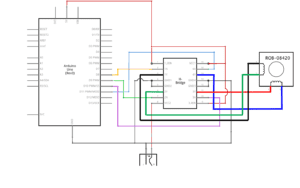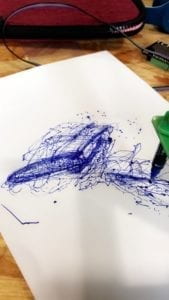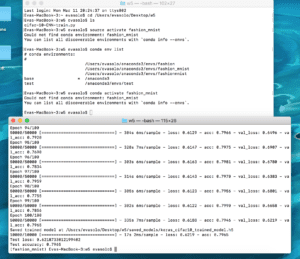Instructor: Marcela
Partners: Issac, Nate, Dom, Rudi
When considering interaction, my immediate association is connection through inputs and outputs. Humans are able to interact with one another intuitively (at least to an extent), but that’s not the only way interaction can be created. Humans are able to create with the added element of interactivity, with the same logistics of inputs and outputs. These creations can take any form; from physical to digital. As I shape my understanding of interactivity, I am learning about AI model training which on a grand scale represents the same concept. Humans are able to train models, which then can proceed without support (as the model has learned its directions/instructions).
“Ask Data” is an AI software where the user is able to input a question, and the program provides an answer – similar to the way Google framework is set up, but with the addition of extensive accuracy and detail. This to me represents the interactivity between the user and the model through sharing of information. The key element that makes this accessible to the general public is the ability to use ‘normal language’ as input, without technical terms. https://www.tableau.com/about/blog/2018/11/ask-data-simplifying-analytics-natural-language-98655
“WhatYouNeed” is a simple Arduino based project that informs the user about the weather, with the additional element of telling you how to behave according to it (take umbrella, use sunscreen). This project does not represent a great extent of interactivity as it shows a predeterminate output due to the input of weather, rather than the user. https://www.hackster.io/microBob/whatyouneed-b63b8f
These examples are interactive tools where the user provides the input and the model provides a calculated/classified/etc output. I think it is very interesting to consider how the same methodology can be used to create something for efficiency or productivity, as well as entertainment.
As I am also learning about Sustainable Fashion, I for the first time was introduced to the concept of ‘fast fashion’ fairly recently. This type of behaviour is one of the main underlying reasons ecological problems are of concern globally. When we started to think about the concept of the future, unlike most fantasies we did not imagine it to be completely distorted from the picture we see today. I guess one can say we are very optimistic in our perspective. With this premises, we wanted to develop an idea/ invention that was not only contributing to efficiency, but in a sense also represented ‘fun’.
Our SUPER BOX BOO 3000 represents the interactivity of the user making a shoe design, and our product 3D printing it. The idea is simple, yet promotes creativity and a unique approach to fashion. When our group and I were considering a hundred years into the future, we discarded the most likely realistic dystopian life, and considered the earth to still be in full functioning. In that case, style and individuality would be very important for the society. Another very important element is the idea of reusing the materials for the purpose of sustainability. In our utopian world, ecology is obviously a priority so the ability to reuse the same materials over and over again is very appealing. This product has a clear purpose for those interested in the idea of being fashionable, or just the comfort of a perfectly fit shoe.
As we developed our performance, we realised we needed to present two elements that would set our product aside from others on the market – the time taken to make the shoe and the price itself. We chose a Under 5 minute time span, as well as a value of Under 1 Bitcoin, as digital currency is the focal point of the economy circulation in our Utopia.
Overall, I really benefited from this project, as I got the opportunity to collaborate with a group of likeminded and motivated individuals. Our team work did not feel like work, but rather an exploration of our minds. This project also allowed me to consider the influence of interactivity in today’s society.


